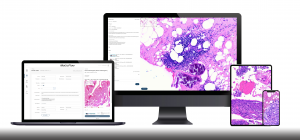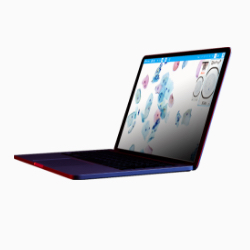One of the challenges currently facing pathology education is the decreasing number of medical students choosing the specialty. This decline also coincides with the number of active, practicing pathologists decreasing worldwide just as cancer rates rise. In the United States, pathology fellowships and labs are increasingly asking “What can we do to attract medical school graduates to pathology?”
Are Negative Stereotypes Keeping Medical Students from Choosing Pathology?
There are a variety of practical uses for digital pathology within pathology education, as we’ll cover below, but one abstract benefit is that integrating telepathology and AI can help shift the perception (that the general public and medical students alike hold) that pathology is an old-fashioned or unexciting field.
As The Pathologist found several years ago in a survey on stereotypes about the pathology profession, some common assumptions about pathologists include: “Pathologists are unfriendly,” “Pathologists aren’t real doctors,” and “Pathologists are lazy.” While even brief exposure to the work that pathologists do proves these beliefs totally false, they can be enough to deter some medical students from seeking residencies in pathology.
Recruiting Residents and Fellows with Digital Pathology
Digital pathology, however, holds the promise to undo some of these negative perceptions. Pathologists who sign out cases digitally or use AI work on the cutting edge of medical technology every day. The growth of telemedicine has also spotlighted the vital role that pathologists play in patient care, even if they never meet those patients face to face. And perhaps digital pathology can also eventually transform the pathology workflow to provide more time for in-person interactions between pathologists and patients, a goal that both populations name as important when surveyed.
Through conversations at tradeshows and visits with our pathologist partners, we’ve found that residents are often the most enthusiastic group when it comes to adopting digital pathology. But they are also not yet in decision-making roles in their institutions. For educators who are passionate about attracting more students to this field, implementing training on using whole slide imaging is a very promising way of demonstrating that your department is current with innovative technology.
Digitizing Slides for Pathology Education
Moreover, digitizing slides is highly important for training the medical students who do make their way into pathology residencies. There’s a reason that experienced pathologists can be skeptical of AI; their expertise is painstakingly built over an entire career of examining slides, and they rightly wonder what an AI would do with an anomalous or rare case. (That’s why many AI companies are rolling out AI-enabled software for routine cases first, since they are far easier to quantify and confirm for accuracy.) Having access to vast slide libraries during residency would equip students with a wealth of knowledge at the beginning of their education and careers.
Digitization also equals standardization. Instructors can ensure that all students are looking at the same features of the same region, at the same resolution, and at the same time. Furthermore, scanning slides decreases the risk of misplacing or breaking historic or delicate slides through frequent use.
Using Online Case Repositories for Pathology Education
Online slide and case repositories where pathologists and students alike can share cases are also an exciting development for digital pathology education, particularly for trainees in areas of the world that are less resourced or without formal training programs in certain subspecialties. For these individuals, the information available in online medical educational platforms proves truly invaluable. We often hear from our partner pathologists from remote global regions that not only has digital pathology made their workloads more manageable, it has also made them feel more a part of the global pathology community when previously they’d been left out. Digital pathology has huge potential to usher in more equity in both pathology education and pathology practice.
And even residents enrolled in robust pathology education programs can benefit from these online resources. They can instantly access cases and a range of subspecialties beyond those offered in their home departments, review information for boards and learn from experts who’ve previously analyzed or diagnosed these shared cases.
Preparing Residents To Be Digital Pathology Leaders
The above benefits for slide digitization are measurable, tangible, and, with the increasing affordability of whole slide scanners, completely achievable for pathology residency programs. And, despite some lingering skepticism, the reality is that digital technologies are already transforming pathology education. The US actually lags behind countries in Europe when it comes to training pathology residents in a fully digital environment.
The bottom line is this: today’s pathology fellows are tomorrow’s researchers, clinicians, and lab directors. Those trained in digital pathology during their medical educations will be far better equipped for their futures as doctors and leaders in the field.
Want to bring digital pathology to your university or residency program? Motic’s affordable and accessible digital pathology hardware and software are designed to suit labs of any size or budget. Contact us today so that we can find the perfect solution for you!






